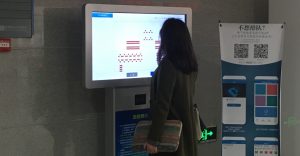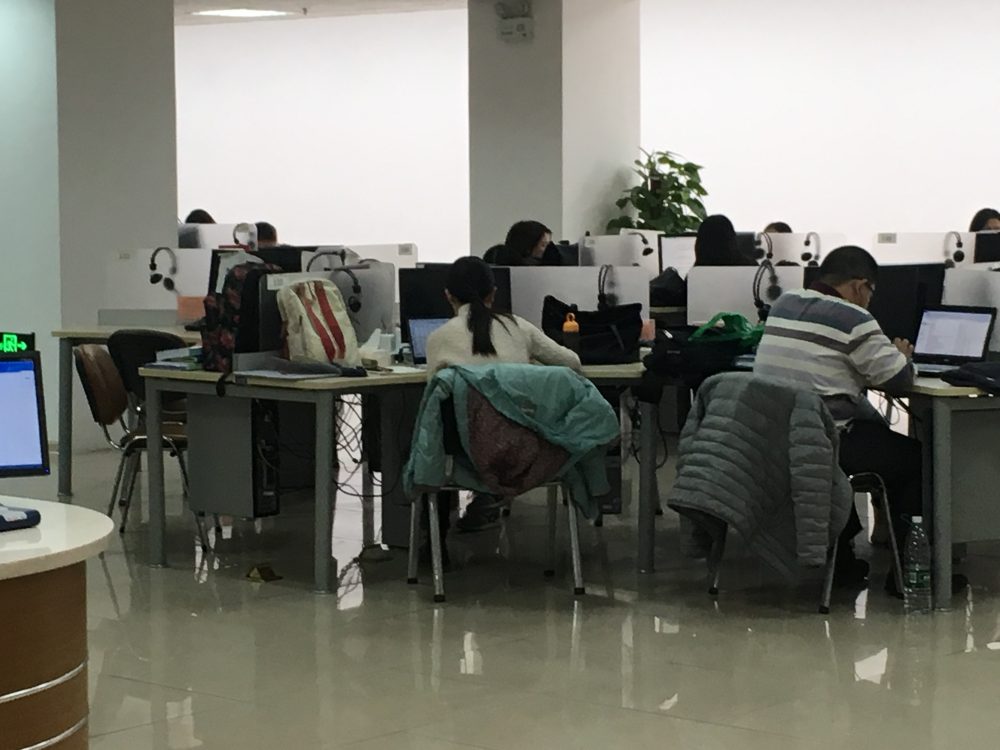In April 2018, I traveled to China and presented research on user research and information literacy at the Beijing Normal University (BNU) and the Southwest University of Political Science and Law in Chongqing. Both universities have relationships with the University of Montana, and ours was one of many diplomatic/academic trips that zig-zag across the Pacific Ocean. In Beijing, I presented a paper that connected my teaching with my experience doing user research, particularly usability testing of the library website at the University of Montana’s Mansfield Library, where I am based. My interpreter while at BNU, Ran, has been an instruction librarian there for ten years, during which the library has never used user research or UX methodologies to inform any of its decision-making. This difference of experience between us and our institutions fostered fascinating and enlightening conversations.
“In China, most librarians want to lead (or guide) students’ behavior but not follow their experience.”
When all communication is cushioned by interpreters in very formal settings, it can be difficult to glean nuance and intention. I found this to be especially true in China, where my questions about context and the larger forces that shaped institutional decision-making were met with wooden, repetitive answers. Post-trip, I sat down with Ran again over WeChat with the hope of gaining more insight into the significance of my presentation and the perception of user research at BNU. We had a wide-ranging conversation that I’ve collected into three categories.
Our Students’ Space Use and Daily Life
The biggest difference I saw between the two academic libraries I visited while in China was the use of physical space. Chinese university libraries are always packed with students. Ran, who has visited US academic libraries and was a visiting scholar for one semester at an American iSchool, told me that “Chinese students prefer to study in the library” more than American students, explaining that Chinese students, undergraduate through doctoral, are required to live on campus. As a result, the library is a place for quiet and a guaranteed seat, as long as you reserve it through the seat reservation system.

Observing students at BNU, I noticed that, although the space was quiet, students were also watching TV shows (using headphones), eating, and using their phones for non-school work. These living conditions contrast greatly with the US’s sprawling college campuses where students choose from the library, dorm common spaces, coffee shops, or maybe even an off-campus residence to do curricular and leisure activities. Many of us who do physical space research have found that students want basically the marriage of an Apple Store and a Starbucks at their disposal 24/7 to study and do work. Millions of dollars are spent to make American libraries more inviting. But if we ratchet up our gate count, what then? Chinese academic libraries feel no such pressure to modify their spaces because students are already there. Based on that one piece of data (that was pointed out and repeated multiple times to us by library administrators), I had the sense that Chinese librarians and administrators interpreted it as a positive sign that they were doing well to serve students. But is that interpretation valid? And if not, why is it an ideal that American university libraries are working towards? What does a high or low gate count really mean for an academic library?
User Research
AT BNU, user data is not collected on a regular basis except for usage analytics of digital resources. Ran articulated that demographic and use information is incorporated into special projects but “normally collecting data is not a part of our work.” By contrast, a large portion of my job is making and executing decisions based on user research I conduct or analytics we collect through Google analytics, our discovery services’ analytics, and transaction logs.
When I asked Ran what made it difficult to interpret my presentation, she told me that it was difficult to explain why we did user research in the US because “In China, most librarians want to lead (or guide) students’ behavior but not follow their experience.” She observed that many younger Chinese librarians feel differently and want to learn about user research. I admired this frank delineation between the desire to guide or influence student behavior and the desire to understand it. This sets up the classic classroom/education structure of omniscient teacher and obedient pupil; a structure China’s higher education system still follows as does America’s. Ran’s comments made me think about my own library’s instruction team and the tension felt when interface or functionality changes are made to the website or digital resources without consulting them. Instruction librarians consider their copious time spent teaching and assisting students as qualification to participate in user-centered decision-making. Ran said that “librarians want to understand users very much, but not everyone has solution(s).” What binds all librarians is our desire to understand students and to help them, what separates us might be how a UX/web librarian versus an instruction librarian thinks they can understand and help a student. I realized that Chinese librarians had a hard time understanding my presentation for roughly the same reasons my colleagues are sometimes not on-board with my decision-making processes.

Thoughts on Intellectual Property
When I found out that Ran used to teach a class on intellectual property to information management students at BNU, I couldn’t help but ask about the current political climate and if she was aware of our government’s accusation of intellectual property thievery by Chinese companies. Ran was not aware of this. It is not surprising; China bans Google, Facebook, Twitter, Instagram, YouTube, Wikipedia and many Western news sources. The non-profit Freedom House ranks China as having the least free media of the 65 countries it surveys. But as university faculty, Ran’s internet access unblocks YouTube, and other websites for academic purposes, particularly Google Scholar. When I explained to Ran how her country is the target of claims by American companies of violated patent and trademarks on the part of Chinese companies, Ran still wasn’t aware of what I was talking about but explained that intellectual property is very confusing in China. For example, although authors can sue for compensation when their work has been published without permission online, there is no organization or infrastructure to prevent that work from going up in the first place or to alert authors when violations occur. Similarly, Ran noted that on a video platform similar to YouTube, people download and re-upload content all the time without consequences. In the classes she teaches now, Ran only discusses information ethics with regards to proper citation and plagiarism. Despite the complex and topical intellectual property concerns facing both our countries’ legal systems, I also feel that I am pressured to only speak about information ethics as it relates to plagiarism and citation management.
Do Chinese academic libraries provide a mirror or an alternative reality to their American counterparts? China is Communist and doesn’t have a free press: it is hard to imagine, especially in this political moment, that there are many similarities between our two countries. But my visit to Chinese academic libraries left me feeling as if I was looking into only a slightly altered reflection of many of the issues I face at my own institution. Maybe our American academic libraries are not as different (and progressive?) as we thought.
